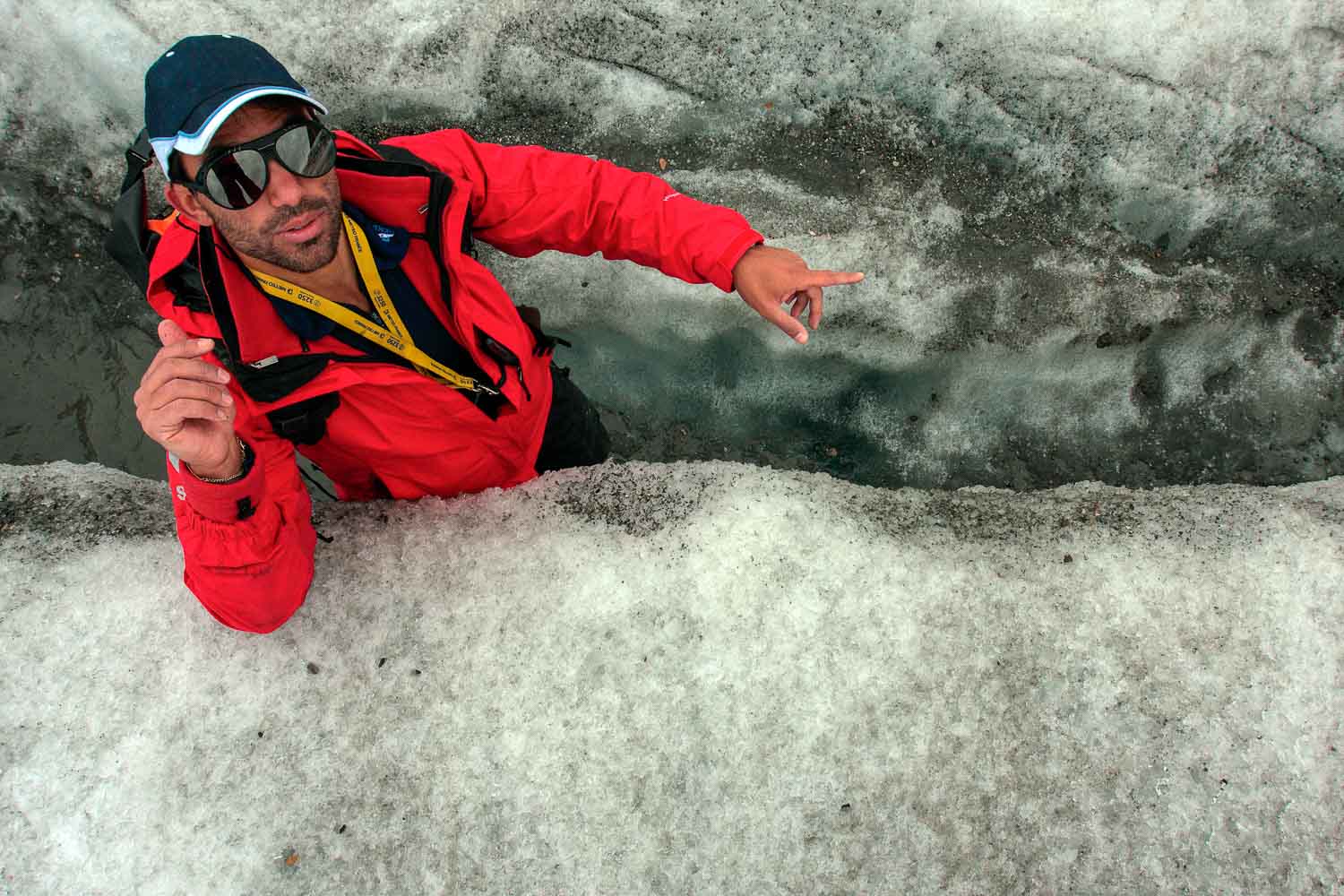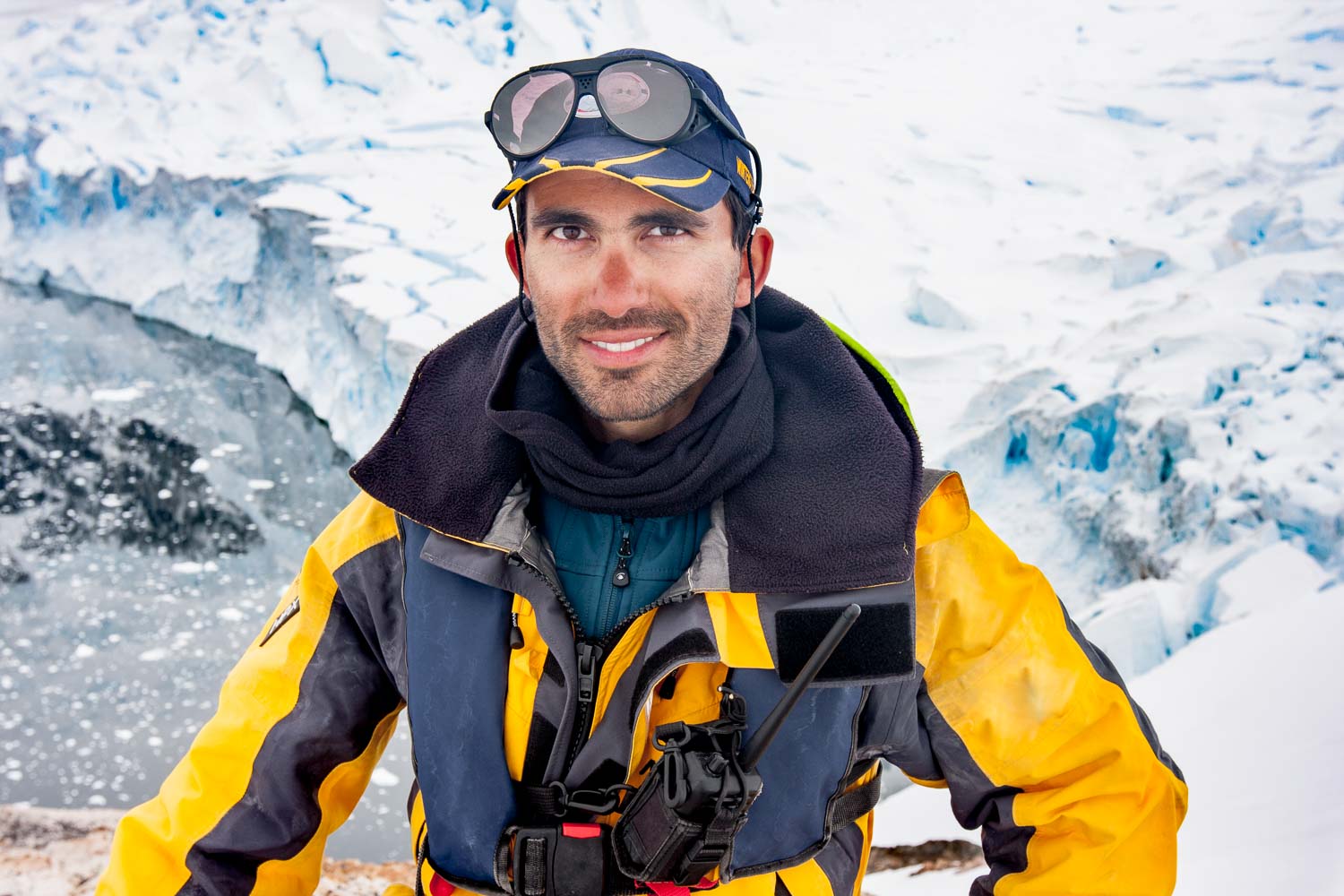
Who am I ?
Dear reader,
I am a professional nature guide. I have previously worked as a freelance contractor for tour operators mostly in the Arctic, Antarctica and sometimes in the tropics. I began organizing my own nature tours to discover the wonders and beauty of the small planet on which we live. Here are a few steps of my life.
My career traveling to remote places started when I went to Antarctica for the first time in 2004. I was a young scientist, and I spent 14 months wintering at the coastal French station Dumont d’Urville, located just on the polar circle close to the Commonwealth Bay, the windiest place on Earth (regularly around 200km/h, maximum up to 320 km/h). This station, bounded by sea ice 8 months a year, is the closest to an Emperor penguin colony, worldwide advertised by the documentary movie “The March of the Penguin”. I spent my time there making measurements of the ozone Layer and UV rate.
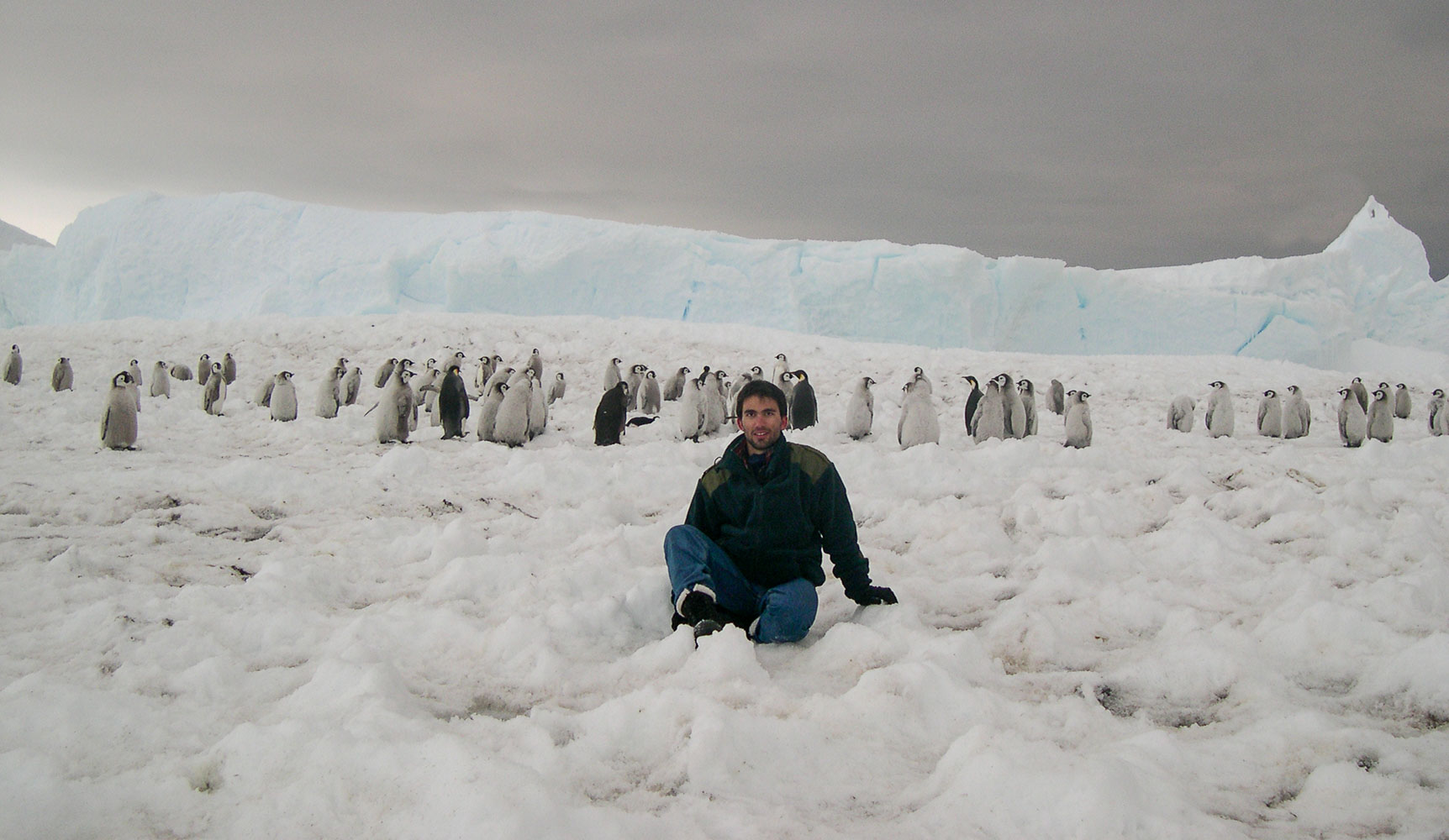 Emperor penguins close to Dumont d'Urville station, my wintering place in Adelie Land
Emperor penguins close to Dumont d'Urville station, my wintering place in Adelie Land
I have spent over a year in deep contact with the wild and pristine Antarctic environment. In the summertime, I created a home among sixty thousand Adelie penguins, the snow and giant petrels, and Weddell and Crabeater seals. During the Winter, the sea ice, a world of icebergs, aurora australis and Emperor penguins became my life. All of these extraordinary things, day after day, became a part of my routine.
Yet, this was not enough. I wanted to experience the vastness and exhilaration of the deserted Antarctic. A few years later, I got the opportunity to spend a second winter in the heart of the most arid area of the planet. Millions of square miles of… nothing. Three permanent stations resided at it’s center. Among them you will find the only International Station in the Antarctic: Concordia Station, located on the coldest area of the planet, the high Antarctic plateau.
Of the 14 months that I spent at Concordia station, nearly 10 of them were spent cut off from the rest of the world with only eleven other fellow scientists as companions. At this place, the outside temperature would vary between a high of -25°C (-13°F) in the summer and a low of -84°C (-120°F) in the winter. The only things that move and change in your surroundings are the position of the Sun during the three months of constant daylight and the stars during the three months of darkness.
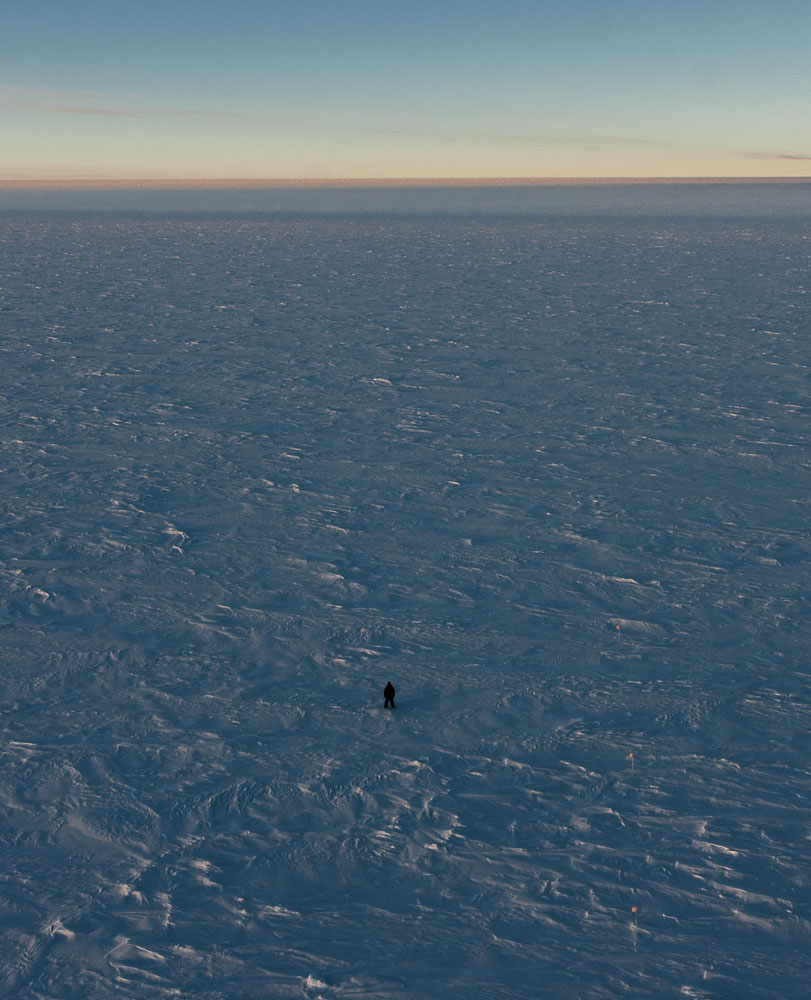 Another 424 days in Antarctica. Dome C where the station Concordia stands. There I have more than 3km (2mi) of snow below my feet.
Another 424 days in Antarctica. Dome C where the station Concordia stands. There I have more than 3km (2mi) of snow below my feet.
Even though the base is located at 3233m (10600ft) high, the landscape is flat, comprised of snow 360° all around you. There are no rocks to add to the barren landscape and the station lies on a layer of snow three kilometers (two miles) deep. That’s probably the reason why the base is nicknamed “the moon”. I was also the radio operator there, responsible for all telecommunications and geophysics instrumentation.
I work as a freelance tour guide, and I have successfully completed more than a hundred trips in the Polar regions on small expedition vessels for several different tour operators. These ships range from 12 to 200 passengers. Aboard I assume many roles: lecturer; photographer; etc... but the majority of the time, I am hired as an Expedition Leader.
My personal library includes more than a hundred books about the polar regions.
I often organize photo exhibitions and give lectures on topics related to the polar regions and my voyages. These mostly take place in Europe, and on the ships that I am employed on.
Naturally, I want to continue traveling by profession, and I started creating my own land-based-trips to some of my favourite places! The idea is explore using the “expedition style” travel that I love so much on small ships. To me, this means: being as flexible as we can to make the best of all opportunities that surrounds us; being able to improvise; enjoying the outdoor; and getting as much information as we can.
Apart from that, I speak five languages. I speak French (which is my native tongue. Ah yup, I’m a Frenchy!), English, Spanish and Italian fluently and German conversationally.
My passion and hobbies include photography, gardening, kayaking and film making. While film making, I created a 52-minute documentary for television about my first winter in the Antarctic, aptly named “Ice bound in Antarctica”. It screened on television in France, Italy, Poland, Iran and Saudi Arabia and I have plans to make another one for the cinema (contact me if you have interest about it). I even wanted to become a wildlife cameraman, but this has not yet worked out, unfortunately. This dream has not been realized… but others will be accomplished!
Maybe with you on a journey ?…
Jonathan.
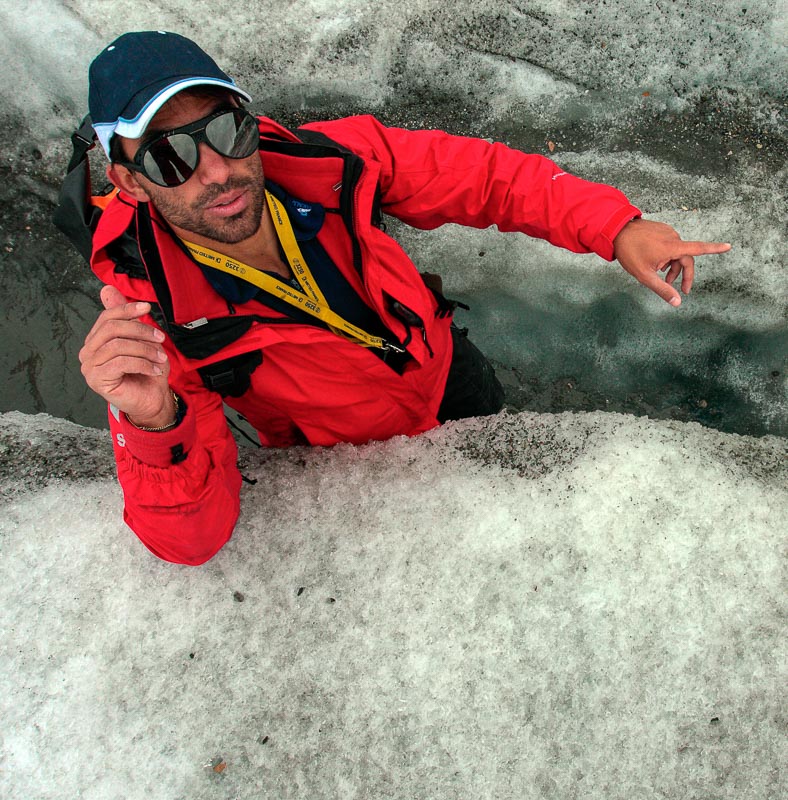
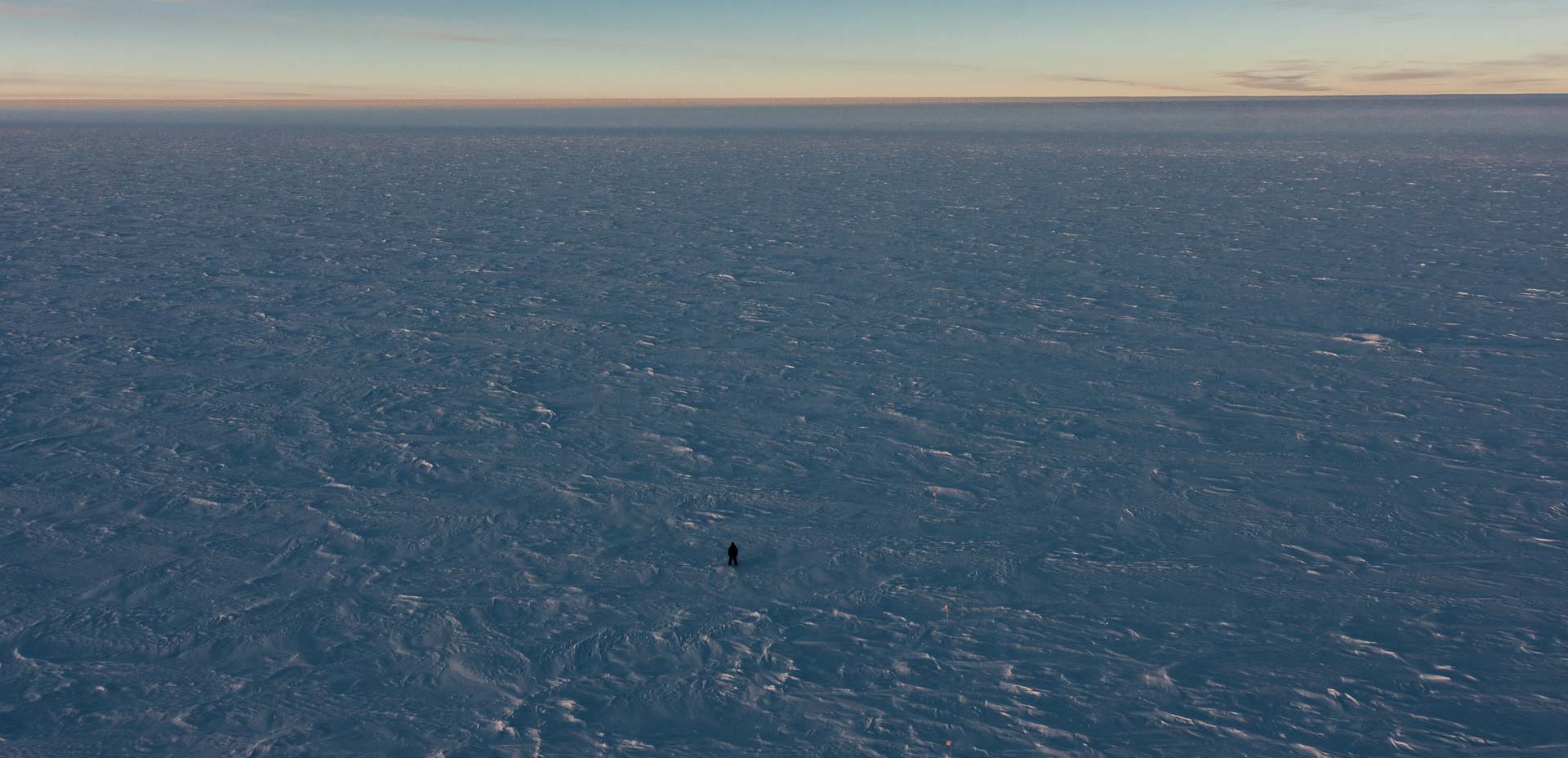 Another 424 days in Antarctica. Dome C where the station Concordia stands. There I have more than 3km (2mi) of snow below my feet.
Another 424 days in Antarctica. Dome C where the station Concordia stands. There I have more than 3km (2mi) of snow below my feet. 